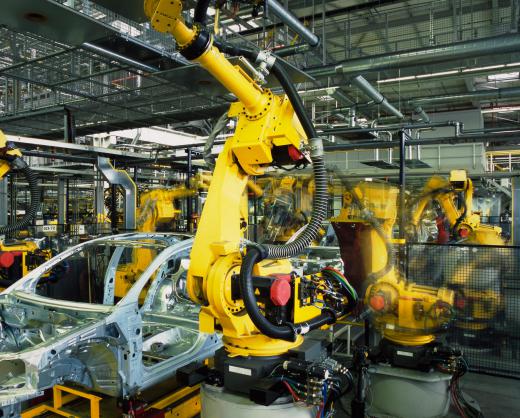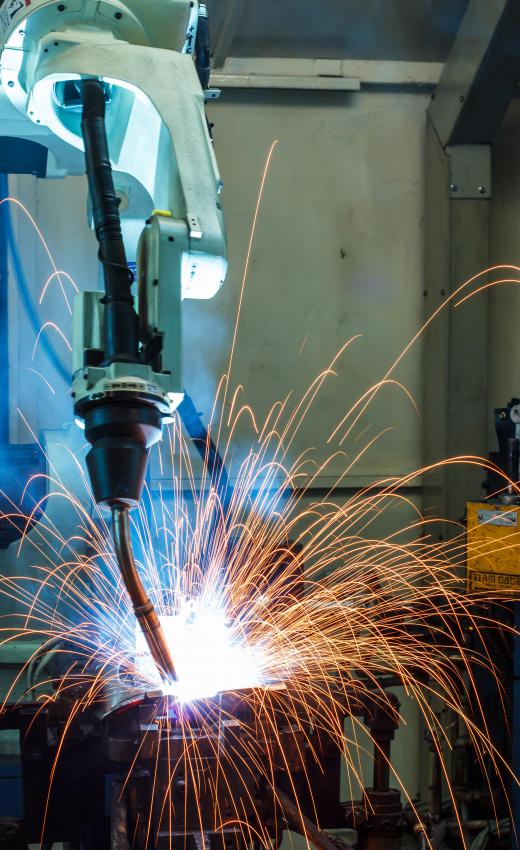The process of robot welding can remove all human involvement from both the handling and welding of various materials. It typically involves programmable robots capable of performing these functions without any human interference, and with limited supervision. A large percentage of all robots used for industrial applications are involved in welding. Methods that commonly use robots include arc welding and spot welding. One sector that makes extensive use of robots for welding purposes is the automotive industry, which began using them in increasingly greater numbers from the 1980s on.
Some of the first robots began to appear in various industrial applications in the 1960s, though they did not see extensive use until the 1980s. At that time, the automotive industry started to use them for spot welding. This type of welding on an automotive assembly line can be repetitive, tedious work and was well suited to automation. The parts are moved to the robots automatically and the robots function based on preset programming, so there is little to no human interaction required for this process.

Robot welding is used in a number of different industries and a few different robotic systems are used. Each robot is typically made up of a command unit that contains the programming and processing capabilities, and a mechanical unit that can be used to manipulate materials and welding equipment. Different types of robots are generally categorized by how their manipulator component operates. A cartesian robot typically has three axes of movement in its manipulator components, each of which moves in a linear fashion at right angles to the others. Other robots may use specially articulated arms that can provide a better range of movement.

Signature imaging processing is a technique that can be used in robot welding to improve efficiency and weld quality. This technology can be used to examine the quality of the work produced in robot welding as it occurs so that adjustments can be made. By using a variety of processing methods, faults and other issues may be identified and fixed immediately.
Some processes use robotic welders but require a person to prepare the materials to some degree. Even though a robot is welding in these circumstances, the term robot welding typically refers only to processes that are fully automated from start to finish. One example of robot-assisted welding is gas metal arc welding. This process will often be automated to some degree, though a human will usually prepare the materials and operate the machinery in some fashion.
